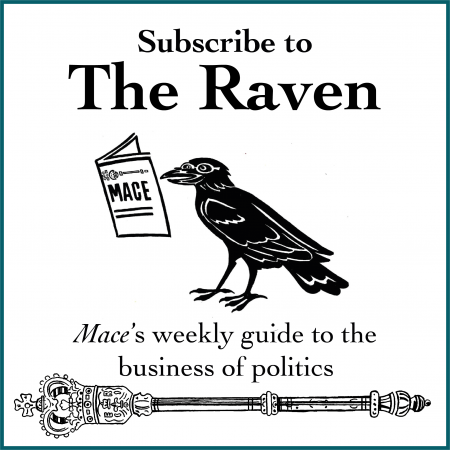The EU has legislated new import licencing regulation to cover art and antiques. These will be fully enforced from 2025.
The regulations pose serious risks to those who trade in artworks. They also raise serious questions about citizens’ rights to personal property.
The new regulations will see art traders required to produce definitive documentation or otherwise be presumed guilty of importing an illegally exported object. This is problematic because this documentation is not always easily available. For example, Germany, with its existing stricter rules, has already seen dozens of items left in limbo as customs frets over what to do with them, having neither the information nor the expertise to decide.
At the heart of this issue are often orphan works, items acquired that either did not require or no longer have documentation verifying their sale and export from their historic countries of origin. The absence of paperwork is commonplace and understandable: the passage of time means much of it has been lost as works changed hands over the decades or centuries. Original export licences (where they existed) were mostly discarded and lacked the sort of detail or photographs demanded to prove their validity today.
Lying behind this issue is the wider context around restitution of artworks from museums to their countries of origin. The Benin bronzes, looted during military actions in the 19th century, are just one example. The countries of origin want their cultural property back. But how can we know what was sold off legally and what was looted? The answer is that mostly we can’t, but this on the other hand is proving no barrier to claims.
Citizens’ rights
What makes the problem worse is that cultural property is a very useful tool for soft power diplomacy. Help Egypt reclaim antiquities and you pave the way for your diplomatic, political and business interests in the country. The fact that Egypt licensed the trade in and export of such objects for more than a century up to 1983, including sales direct from the Cairo Museum, is an inconvenience that is now ignored.
How do the new regulations sit with citizens’ rights? Personal property rights
are enshrined as the first article of the European Convention on Human Rights. They are similarly listed in the US constitution and the UN Universal Declaration of Human Rights.
As John Adams, second president of the United States, stated in A Defense of the Constitutions of Government of the United States of America in 1787: “The moment the idea is admitted into society that property is not as sacred as the laws of God, and that there is not a force of law and public justice to protect it, anarchy and tyranny commence.” If Europe lists property rights as the first consideration of its rights convention, this surely matters. Yet these rights are at risk from these new regulations.
The regulations were drafted on a basis of false assumptions and inadequate data. It is often claimed that cultural property trafficking to the art market is funding terrorism on a grand scale. Yet despite millions of euros being thrown at investigations in the EU and the US to prove this, researchers have singularly failed to establish a link.
Europol and Interpol, who have helped coordinate massive transnational anti-crime operations since 2014 under names such as Pandora and Athena, publish headline-grabbing statistics about arrests and seizures, which influence policy.
This is not good enough. What policy makers need are the figures for successful prosecutions resulting from these arrests and validation figures for seizures so they can accurately assess the true scale of the challenges involved. Europol has admitted in the past that it does not have this data. Why not, when so many resources have been dedicated to these initiatives? Such basic failures of governance reduce these operations to little more than expensive propaganda exercises – yet they persist.
Filling the gaps in knowledge and evidence by acting on what you believe to be true rather than what you can prove – a common practice now – simply plays to prejudice and effectively reinforces that dangerous adage that the ends justify the means. Such an approach erodes the democratic mandate of institutions. The good news is that the solution already lies at the heart of the European Commission itself.
Ursula von der Leyen set out her mission statement for better policy making in September 2019: “We need to ensure that regulation is targeted, easy to comply with and does not add unnecessary regulatory burdens. The Commission must always have the leeway to act where needed.
“At the same time, we must send a clear signal to citizens that our policies and proposals deliver and make life easier for people and for businesses.”
She continues: “Proposals must be evidence based, widely consulted upon, subject to an impact assessment and reviewed by the independent Regulatory Scrutiny Board. You will ensure that they respect the principles of proportionality and subsidiarity and show the clear benefit of European action.”
This statement was not a suggestion but an order, but are its admirable sentiments being enforced? Our own experience suggests that they are not.
Remove pre-set bias
The European Commission needs to conduct an urgent review of practice to ensure that research and evidence meet standards set. Europe needs an audit of project funding protocols to remove any pre-set bias. And it needs genuine engagement with industry stakeholders rather than the window dressing that takes place at present. These are all systemic issues, but positive change is achievable.
The art market and the ecosystem within which it exists is not separate from wider EU society but fully a part of it. If opportunities are being missed to protect individuals’ rights in the context of the art market, they are being missed to protect the rights of millions of EU citizens.
President von der Leyen’s mission statement presents a massive opportunity for EU legislators and civil servants to lead the way globally in high quality research, analysis and development of policy across all sectors, including the art market, to protect the democratic mandate. They should grasp it with both hands.
How the figures add up
Almost all the figures circulating about illicit trade in cultural property are not just wrong, they are wildly inaccurate. Many are based on claims, media articles or reports that are more than 20 (and in one important case 30) years old. In every case, the original source either does not say what is now attributed to it, or simply gives the figure as the unsourced opinion of an individual.
Two current sources come closer than any other in giving some idea of the true figure: the World Customs Organisation’s (WCO) annual illicit trade reports and the national Financial Intelligence Units of some EU member states. For some reason, though, these sources are generally ignored in the policy-making process.
As the WCO is clear to point out, its own figures are hampered by limited reporting via its Central Enforcement Network, the sole source of its statistics. However, comparisons with other risk categories, such as drugs, counterfeit goods and weapons, show that they dwarf cultural property, which barely registers in the crime statistics by comparison. This is true whether you compare the number of seizures, number of items seized, number of cases investigated, value of items seized or arrests. The accompanying pie chart for seizures, prepared by the International Association of Dealers in Ancient Art from the WCO’s 2019 figures, clearly illustrate this.
The Dutch Financial Investigations Unit monitors suspicious cash transactions. Results from its 2018-2020 report raise questions as to why the art and antiques trade is being targeted by new anti-money laundering regulations when vehicle trading is not.
Cash transactions above €2,000 are almost non-existent in the art market, with only 58 for the entire period. Of those, the ministry declared itself suspicious of only two. In the same period car dealers reported a total of 14,513 cash transactions, of which the ministry considered 4,571 suspicious.
Across all sectors of commerce, the Dutch FIU recorded just over 3.9 million cash transactions for the period, with 5.11 per cent of them deemed suspicious.
As can be seen from these figures, even suspected crime associated with cultural property transactions is all but non-existent.
Ivan Macquisten is an art market commentator, adviser and campaigner


